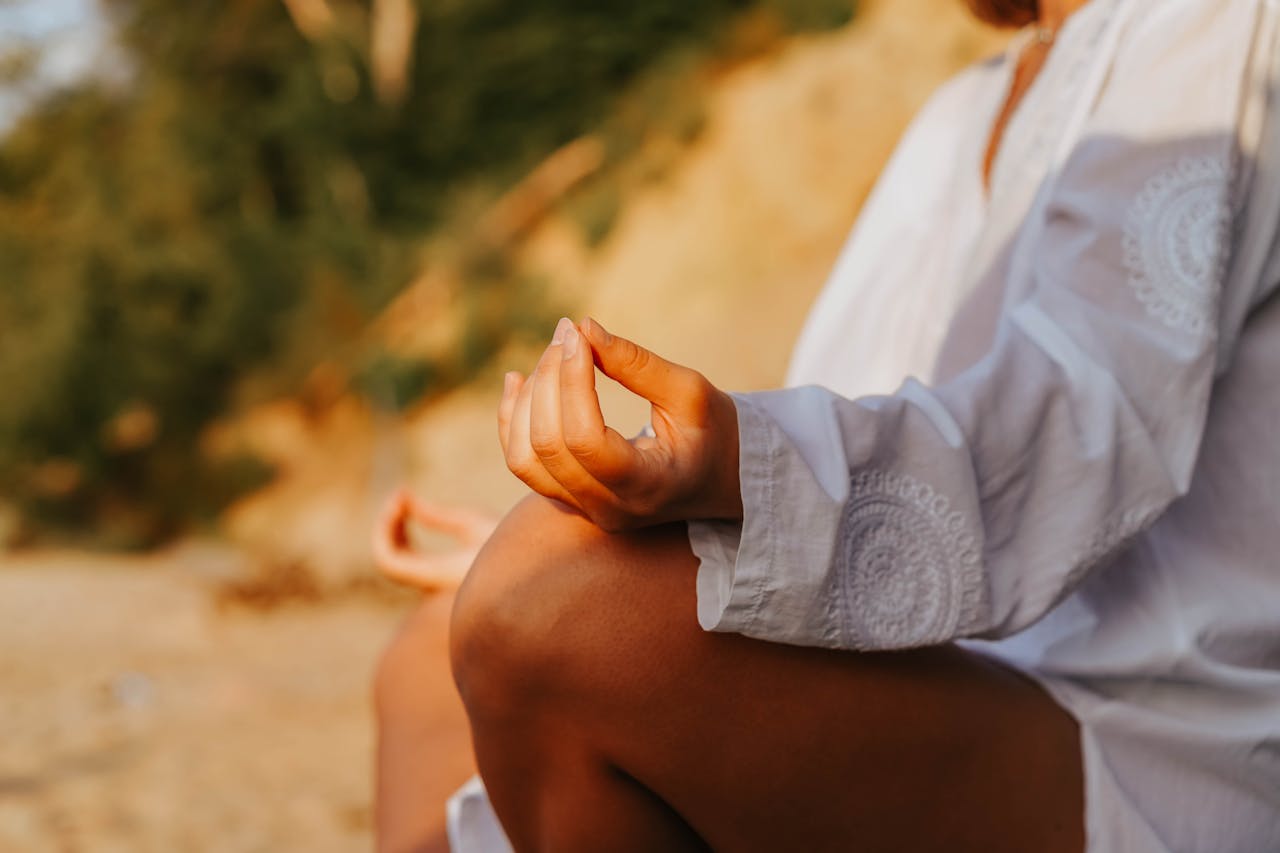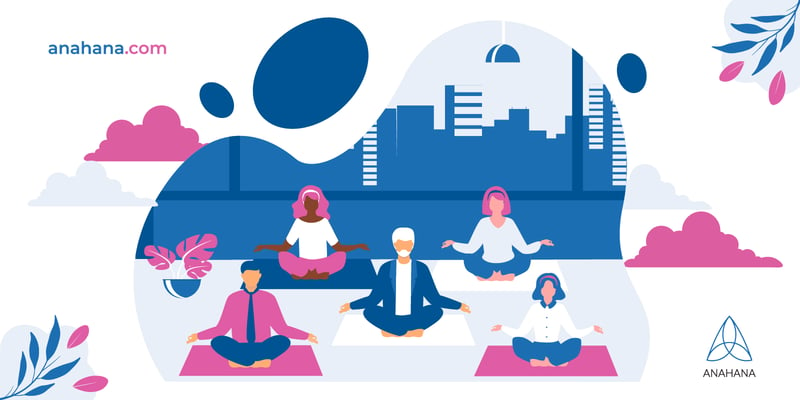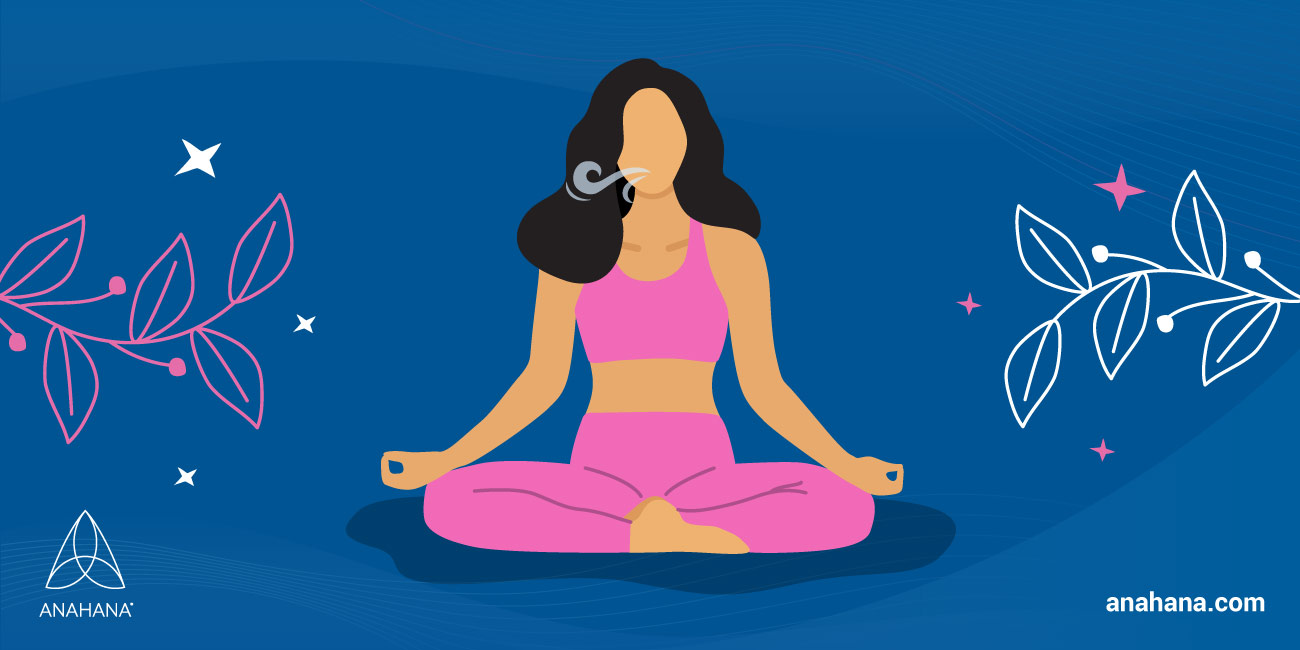
Table of Contents
Mudras, an ancient practice of symbolic hand gestures that can enhance your meditation, yoga, and overall wellness. Learn the meanings, benefits, and techniques in our comprehensive guide.
Mudra Definition
In the realm of yoga and spiritual practices, a mudra is a symbolic hand gesture that is integrated into various asanas, meditation, and pranayama.
These gestures are designed to facilitate the flow of energy in the body and to enhance one's focus and connection to the spiritual aspect of yoga.
Each mudra has a specific purpose and is believed to influence the body's energetic pathways and emotional states, aiding in the deepening of concentration and the cultivation of a specific state of mind.
While they have historical roots, mudras are used in contemporary yoga and meditation practices as tools for spiritual growth and self-exploration, independent of religious connotations.
Where Mudras Originate From?
The Vedas, an ancient collection of Hindu scriptures dating back to 1500 BCE, were the first to mention Mudras.
Mudras are also an essential part of classical Indian dance, where they are used to express emotions.
In addition to Hinduism, mudras are a part of Buddhism and Jainism - two other Indian religions that share Hindu roots.
In Buddhism, mudras are often an essential element of meditation, used to direct a person's attention inward.
In Jainism, on the other hand, monks and nuns use mudras as part of their ascetic practice.
In yoga, mudras are an integral part of the practice. Yoga mudras help to focus the mind, direct energy and promote physical and mental health.
The Benefits of Mudras

Mudras, integral to various yogic practices, offer a range of benefits that enhance both the physical and spiritual aspects of these disciplines.
By adopting specific hand gestures, practitioners can deepen their yoga and meditation experiences. Here are four key benefits of incorporating mudras into your practice:
-
Improved Energy Flow: Mudras are believed to influence the flow of energy in the body, helping to balance and redirect it. This can lead to a feeling of increased vitality and well-being, especially when combined with yogic breathing exercises.
-
Enhanced Focus and Concentration: The use of a specific mudra during meditation and pranayama can aid in sharpening mental focus and concentration. This heightened attention helps in achieving a deeper, more effective meditative state.
-
Connection with the Entire Body: In Hatha Yoga, mudras add a layer of depth to the physical practice. They create a subtle connection with the entire body, promoting a greater sense of bodily awareness and mindfulness.
-
Emotional Balance: Practicing mudras can also have a calming effect on the mind, which in turn helps in managing stress and emotional turbulence. This aspect of mudras contributes to overall mental and emotional well-being, complementing the physical benefits of yoga.
Types of Mudras
There are many different mudras, each with diverse symbolism and meaning. Some mudras are for specific purposes, such as improving concentration or relieving stress, while others are for more general purposes, such as relaxation or balancing the body's energy. Here are some of the most popular mudras.
Anjali Mudra
Anjali mudra, meaning "offering" or "salutation," is the most well-known Mudra. This Mudra is often performed at the beginning and end of yoga class to show respect for the teacher and practice.
Practitioners will place the palms together in front of the heart or out in front of the body. Anjali can be used as a prayer mudra gesture or to bring the palms of the hands together.
Dhyana Mudra
Dhyana mudra is a meditation mudra. In this Mudra, the hands are in the lap, the palms facing upwards, and the thumbs are lightly touching.
This Mudra helps to still the mind and bring about a state of deep concentration. In Dyana, practitioners rest the right hand on the left hand with the palms facing up. With the thumbs touching, the index fingers come together.
Bhadra Mudra
Bhadra mudra is a mudra of protection. In this Mudra, the hands are held in front of the chest with the palms facing out and the fingers pointing up.
The thumbs touch the base of the little fingers. This Mudra helps to ward off negative energy and create a sense of safety and security.
Prana Mudra

The Prana mudra is a mudra of healing. In this Mudra, the hands are positioned in front of the heart with the palms facing up and the tips of the thumb, index, and middle finger on either hand touching. This Mudra helps to increase energy and vitality.
Apana Mudra
Apana mudra is a mudra of detoxification. In this mudra, the hands are held in front of the lower abdomen with the palms facing down and the thumb, index, and middle fingers touching. This Mudra helps to stimulate the digestive system and promote elimination.
Varun Mudra
The Varun Mudra is a specific hand gesture in yoga where the tip of the little finger touches the tip of the thumb, while the other fingers remain straight.
This mudra is associated with balancing the water element in the body and is believed to help regulate fluids and improve skin hydration and clarity.
Chin Mudra
The chin mudra is a mudra of consciousness. In this mudra, the right hand is held in front of the heart with the right palm facing up and the thumb, index, and middle fingers touching. The ring finger and little finger stay extended. The left palm sits in the lap, the thumb lightly touching the index finger.
The chin mudra helps to still the mind and bring about a meditative state of deep concentration.
In addition to the listed mudra gestures, there are many more, such as:
-
Surya mudra
-
Vajroli mudra
-
Vayu mudra
-
Ganesha mudra
-
Prithvi mudra
-
Agni mudra
How Do Mudras Work
Mudras are believed to work by influencing the body's energy flow and balancing various elements within it.
They involve specific hand positions that are thought to stimulate different areas of the brain, impacting physical, emotional, and spiritual well-being.
The practice of mudras, often combined with yogic breathing exercises and meditation, is said to help in unblocking energy channels.
This process is thought to enhance physical health and promote mental clarity and emotional stability.
Tips How to Practice Mudras
Practicing mudras effectively involves a few key tips to enhance their benefits:
-
Visual Aids: Keep a chart or pictures of various mudras where you frequently practice. This serves as a handy reference and a visual reminder to practice.
-
Use a Mirror: Practicing in front of a mirror can be helpful, especially for beginners. It allows you to check and correct your hand positions, ensuring you're performing the mudra correctly.
-
Relaxed Hands: Hold your hands in the chosen mudra gently. Avoid excessive pressure or strain on your fingers. The gesture should feel natural and comfortable.
-
Prevent Hand Stiffness: Regular hand stretches can prevent stiffness and discomfort, especially if you're holding a mudra for an extended period.
-
Focus and Intention: While practicing, maintain a focus on the intention or area of improvement the mudra is associated with. This mental focus amplifies the mudra’s effectiveness.
-
Start with Simple Mudras: Begin with simpler mudras before progressing to more complex ones. This helps in gradually building your comfort and familiarity with the practice.
Remember, the effectiveness of mudras can be subjective and varies from person to person. It's important to approach them with patience and an open mind.
Takeaway
In conclusion, the practice of mudras offers a unique and powerful way to enhance your physical, mental, and spiritual well-being.
These simple yet profound hand gestures, deeply rooted in ancient traditions, are a testament to the interconnectedness of our body and mind. Whether you're a seasoned practitioner or a curious beginner, integrating mudras into your daily routine can be a transformative experience.
They require minimal time and space, making them accessible to everyone, regardless of lifestyle or physical ability.
By incorporating mindful breathing, regular practice, and hand stretches, you can maximize the benefits of mudras.
Frequently Asked Questions About Mudras
Can mudras be done lying down or while walking?
Yes, doing mudras lying down, sitting, walking, or standing is possible.
Do mudras have to be done with both hands?
No, doing mudras with one or two hands is acceptable.
Which mudra is best for yoga practice?
There is no one "best" mudra for yoga practice. Each mudra has its benefits and can be used to support different aspects of the wellness practice.
Which mudra is best for meditation?
There is no one "best" Mudra for reflection. Each mudra has its benefits and can be used to support different aspects of the wellness practice.
References
https://en.wikipedia.org/wiki/Mudra
https://www.soweflow.com/blogs/journal/a-guide-to-mudras
https://isha.sadhguru.org/yoga/yoga-articles-yoga/mudras-science-types/
https://en.wikipedia.org/wiki/List_of_mudras_(yoga)
https://www.ekhartyoga.com/articles/practice/an-introduction-to-mudras
Disclaimer
The contents of this article are provided for informational purposes only and are not intended to substitute for professional medical advice, diagnosis, or treatment. It is always recommended to consult with a qualified healthcare provider before making any health-related changes or if you have any questions or concerns about your health. Anahana is not liable for any errors, omissions, or consequences that may occur from using the information provided.

By: Meriah McCauley
Meriah McCauley is a leading voice in holistic healing, known across North America for her expertise in chakra balancing, spiritual alignment, and energy-based wellness. Her work bridges the art and science of mind-body healing, shaped through years of study, practice, and mentorship. Meriah deepened her understanding of spiritual anatomy and the chakra system under the guidance of her guru, Dr. Don Stapleton, during her immersive training in Costa Rica. She later earned her Master’s degree in Psychology from Columbia University, specializing in Spirituality and the Mind–Body connection, which continues to influence her integrative approach. Today, she supports individuals and practitioners through coaching, yoga teacher trainings, chakra-focused education, and Holotropic Breathwork for personal transformation. Meriah is dedicated to helping others develop emotional clarity, energetic balance, and spiritual resilience—and she remains committed to guiding anyone seeking a deeper, more meaningful connection with themselves.